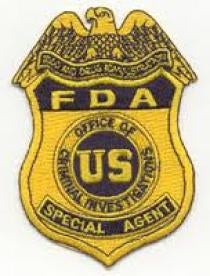Last week, the U.S. Food and Drug Administration (FDA) issued a final guidance titled “Assessing the Effects of Significant Manufacturing Process Changes, Including Emerging Technologies, on the Safety and Regulatory Status of Food Ingredients and Food Contact Substances, Including Food Ingredients that are Color Additives” (guidance).
The guidance[1]details the factors to be considered when evaluating changes in the manufacturing process for a food substance. Food substances include food ingredients, food contact substances and color additives. The factors proposed in the guidance aid industry to evaluate whether such manufacturing changes affect the identity, safety and regulatory status of a food substance, therefore, whether a new regulatory submission to FDA is warranted.
The guidance is an update to a draft guidance issued in April 2012, and was announced alongside other recently released guidance documents addressing nanotechnology.[2] FDA suggests that the reassessment of a food substance should be considered after making a “significant” change to the manufacturing process. FDA does not offer a clear definition for what constitutes a significant manufacturing process change, but notes that “[a]ny manufacturing change has the potential to be significant.” The agency does offer several examples:
-
A change in one or more starting materials;
-
A change in the concentration of starting materials;
-
A change in catalyst;
-
A change in the source microorganism (including a change in strain) used for a food substance derived from fermentation of a microorganism; and
-
A change in food manufacturing or ingredient technology, such as the use of emerging technologies that affect the particle size distribution of a food substance.
These specific examples are important to helping the industry understand what FDA considers to be a significant manufacturing change. These examples were added to the final guidance, as they were not included in the 2012 draft.
The recommended factors for assessing significant manufacturing process changes are grouped into four categories based on the regulatory pathway for the food substance:
1) Food substances, including food contact substances, that are the subject of a food additive or color additive regulation;
2) Food contact substances for which there is an effective Food Contact Notification;
3) Food substances that are affirmed or identified as generally recognized as safe (GRAS) in the Code of Federal Regulations; and
4) Food substances (not including color additives) for which there is an existing determination that a use of a food substance is GRAS
Despite this grouping, the analytical process recommended by FDA is nearly identical, and involves:
-
Determining what changes have been made to the identity of the food substance as a result of the change in manufacturing process, including its physicochemical structure and properties, purity, and impurities;
-
Conduct a safety assessment for such changes to the food substance, including characteristic properties such as physicochemical structure and properties, purity, impurities, bioavailability, or toxicity;
-
Consider whether the use of the food substance is within the existing regulatory authorization, taking into account changes to the identity of, manufacturing process for, or the conditions of use of the food substance, and any impurities introduced into the food substance by the change in manufacturing process;
-
Consultation with FDA about such conclusions; and
-
Making an appropriate regulatory submission to FDA as appropriate.
Ostensibly promoted by FDA as guidance on nanotechnology, the guidance document is more general in nature and advises on how to assess any type of significant manufacturing change. FDA’s treatment of nanotechnology with respect to food production does not appear to have changed, in that “FDA considers food manufacturing processes that involve nanotechnology in the same manner as any other food manufacturing technology.” FDA does note, however, that “so-called nano-engineered food substances can have substantially altered bioavailability and may, therefore, raise new safety issues that have not been seen in their traditionally manufactured counterparts.” FDA does not offer specific testing recommendations in the guidance document on nanotechnology-specific manufacturing changes.
[1] A copy of the guidance is available here.
[2] The other guidance documents announced last week are:
This guidance provides an overarching framework for FDA’s approach to the regulation of nanotechnology products. It identifies two points to consider when determining whether the FDA-regulated product involves the application of nanotechnology. An affirmative finding to either of the points to consider might suggest the need for particular attention by the Agency and/or industry to the product to identify and address potential implications for safety, effectiveness, public health impact, or regulatory status of the product.
The points to consider are intended to be a broad screening tool for FDA purposes, reflecting the fact that for purposes of ensuring that all applicable requirements are met, FDA’s interest extends to the properties exhibited by products that involve the use of nanotechnology, and does not focus on size alone. FDA may further refine these points to consider as the science evolves. The guidance does not establish a regulatory definition of the term "nanotechnology" or any related vocabulary.
The final guidance also encourages industry to consult with the FDA early in the product development process to address questions related to the safety, effectiveness, or other attributes of nanotechnology products, or to address questions about regulatory status of the products.
Final Guidance for Industry: Safety of Nanomaterials in Cosmetic Products
This guidance describes FDA’s current thinking on the safety assessment of nanomaterials when used in cosmetic products.
-
Cosmetics and cosmetic ingredients (with the exception of color additives) are not subject to premarket approval; however, they must be safe for consumers under labeled or customary conditions of use, and they must be properly labeled.
-
Cosmetics manufactured using nanomaterials are subject to the same legal requirements as any other cosmetics. Companies and individuals who market cosmetics are legally responsible for the safety of their products.
-
In general, the framework currently in use for assessing safety of cosmetics is appropriate for cosmetics containing nanomaterials. However, data needs and testing methods should be evaluated in light of the properties, behaviors, and/or effects that may be exhibited by nanomaterials used in cosmetic products
Draft Guidance for Industry: Use of Nanomaterials in Food for Animals
This draft guidance describes FDA’s current thinking regarding the use of nanomaterials or the application of nanotechnology in food for animals. This draft guidance addresses the legal framework for adding substances to food for animals and includes recommendations for submitting a Food Additive Petition (FAP) for a nanomaterial animal food ingredient. FDA’s draft recommendations for developing an FAP for a nanomaterial animal food ingredient highlight considerations for the following sections of an FAP:
-
Identity;
-
Manufacturing Methods and Controls;
-
Intended Use, Use Level, and Labeling;
-
Analytical Methods;
-
Safety Evaluation and Proposed Tolerances for the Food Additive;
-
Proposed Regulation; and
-
Environmental Assessment.
This draft guidance also recommends manufacturers consult with FDA early in the development of their nanomaterial animal food ingredient and before submitting an FAP.




 i
i

